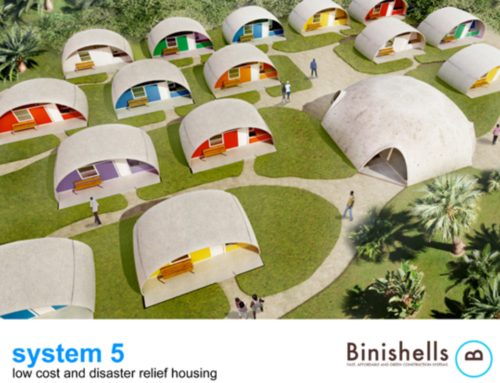[youtube https://www.youtube.com/watch?v=Sz1Yyiz_qbA&w=560&h=315]
“The shipping container made one trip from Asia loaded with dry goods. From the harbor it was trucked to a small factory beside the Los Angeles River in Elysian Valley. There it made a 400-foot journey along an assembly line where more than 40 workers cut, welded, wrenched and nailed until it emerged eight days later with wallboard, windows, electrical and plumbing. Encased in shrink wrap, the container was unloaded from a truck onto a vacant lot in Orange County, one of 54 prefabricated modules that will arrive over the next two weeks.
They will be joined three to a unit and stacked to form a two-story, 16-unit apartment building for homeless veterans.
Over the decades, the goal of housing homeless people quickly and cheaply has spawned desperate ideas: tent cities, geodesic domes and micro shacks. All have proved to be neither permanent nor palatable.
Now an Orange County nonprofit is hoping that used shipping containers can provide shelter that is quick and economical but also permanent and homelike.
American Family Housing, a nonprofit that builds housing and provides services for the homeless, is creating California’s first shipping-container apartment building.
The project comes at a time when the number of homeless people in Orange County is estimated at more than 15,000, up from fewer than 13,000 two years ago. Growing homeless encampments in the Santa Ana civic center and along the banks of the Santa Ana River have raised a public outcry.
Though the project, called Potter’s Lane, will admittedly serve only a tiny portion of that need, American Family Housing’s chief executive, Donna Gallup, expects it to inspire many others.
With a modern wood-and-glass facade designed by SVA Architects, the structure will reveal little of its origin in the graveyard of shipping containers at L.A. Harbor.
“We are not putting people in shipping containers,” Gallup said. “We are putting them in housing — very energy-efficient, very structurally strong, very beautiful multifamily housing. It happens to be that the materials that will build that housing are shipping containers.”
Modifying shipping containers to house homeless people seems like a natural.
The raw materials are plentiful, with tens of thousands of idle containers stacked at the port. The turnaround can be quick, and, despite their humble origins, containers can be fashioned into pleasant living spaces.
The potential was demonstrated in the wars in Iraq and Afghanistan.
American contractors working for the U.S. Army Corps of Engineers have built hundreds of shipping-container residences in the two countries to billet U.S. personnel.
For war-zone accommodations, they are surprisingly homey, but neither aesthetic nor meant to be permanent.
In contrast, the subsidies and tax credits that fund housing for the homeless require the projects to be viable for decades.
Among the drawbacks that have discouraged developers is that containers are not designed for the stress of multistory construction.
American Family Housing is collaborating on the Potter’s Lane project with a Los Angeles manufacturing company, GrowthPoint Structures, which developed a proprietary solution for the structural weakness.
GrowthPoint, which also builds classrooms from containers, has obtained approval of its modular system for multifamily construction from the California Department of Housing and Community Development.
The approval, a first, will allow Growth Point to build in any community without review of the modules by local building officials.
Gallup said she embraced the system in the hope of pioneering faster, less costly housing that could be replicated across the region.”
Source: https://www.youtube.com/user/WiseWanderer1
[contact-form][contact-field label=’Name’ type=’name’ required=’1’/][contact-field label=’Email’ type=’email’ required=’1’/][contact-field label=’Comment’ type=’textarea’ required=’1’/][/contact-form]



